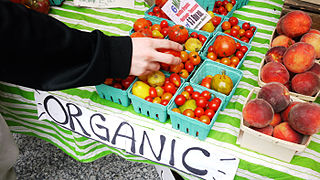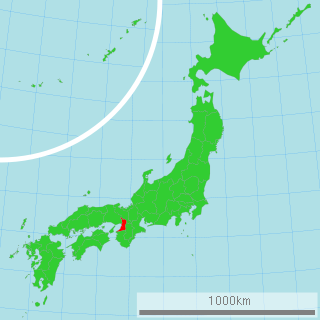
Organic farming is an alternative agricultural system which originated early in the 20th century in reaction to rapidly changing farming practices. Organic farming continues to be developed by various organic agriculture organizations today,it also defined as use of relies on fertilizers of organic origin such as compost manure, green manure, and bone meal and places emphasis on techniques such as crop rotation and companion planting. Biological pest control, mixed cropping and the fostering of insect predators are encouraged. In general, organic standards are designed to allow the use of naturally occurring substances while prohibiting or strictly limiting synthetic substances. For instance, naturally occurring pesticides such as pyrethrin and rotenone are permitted, while synthetic fertilizers and pesticides are generally prohibited. Synthetic substances that are allowed include, for example, copper sulfate, elemental sulfur and Ivermectin. Genetically modified organisms, nanomaterials, human sewage sludge, plant growth regulators, hormones, and antibiotic use in livestock husbandry are prohibited. Reasons for advocation of organic farming include advantages in sustainability, openness, self-sufficiency, autonomy/independence, health, food security, and food safety.

Intensive farming involves various types of agriculture with higher levels of input and output per cubic unit of agricultural land area. It is characterized by a low fallow ratio, higher use of inputs such as capital and labour, and higher crop yields per cubic unit land area. This contrasts with traditional agriculture, in which the inputs per unit land are lower. The term "intensive" involves various meanings, some of which refer to organic farming methods, and others that refer to nonorganic and industrial methods. Intensive animal farming involves either large numbers of animals raised on limited land, usually concentrated animal feeding operations (CAFOs), often referred to as factory farms, or managed intensive rotational grazing (MIRG), which has both organic and non-organic types. Both increase the yields of food and fiber per acre as compared to traditional animal husbandry. In CAFO, feed is brought to the seldom-moved animals, while in MIRG the animals are repeatedly moved to fresh forage.

The organic movement broadly refers to the organizations and individuals involved worldwide in the promotion of organic farming and other organic products. It started around the first half of the 20th century, when modern large-scale agricultural practices began to appear.

Organic certification is a certification process for producers of organic food and other organic agricultural products. In general, any business directly involved in food production can be certified, including seed suppliers, farmers, food processors, retailers and restaurants. A lesser known counterpart is certification for organic textiles that includes certification of textile products made from organically grown fibres.

Agricultural wastewater treatment is a farm management agenda for controlling pollution from surface runoff that may be contaminated by chemicals in fertiliser, pesticides, animal slurry, crop residues or irrigation water.

Organic horticulture is the science and art of growing fruits, vegetables, flowers, or ornamental plants by following the essential principles of organic agriculture in soil building and conservation, pest management, and heirloom variety preservation.
The Agricultural Marketing Service (AMS) is an agency within the United States Department of Agriculture, and has programs in five commodity areas: cotton and tobacco; dairy; fruit and vegetable; livestock and seed; and poultry. These programs provide testing, standardization, grading and market news services for those commodities, and oversee marketing agreements and orders, administer research and promotion programs, and purchase commodities for federal food programs. The AMS enforces certain federal laws such as the Perishable Agricultural Commodities Act and the Federal Seed Act. The AMS budget is $1.2 billion.

Organopónicos or organoponics is a system of urban agriculture using organic gardens. It originated in Cuba and is still mostly focused there. It often consists of low-level concrete walls filled with organic matter and soil, with lines of drip irrigation laid on the surface of the growing media. Organopónicos is a labour-intensive form of local agriculture.
An organic product is made from materials produced by organic agriculture. There are different types of organic products. However organic product is more known for food items like organic grocery, organic vegetables, organic certified food etc. Most appropriately organic products can be explained as any products that is made or cultivated organically should be treated as organic product. Most of the country has a very strict food safety and security guidelines to protect the consumers from consuming harmful products. Most of the country has their own standard to define products as organic. USA uses USDA certification - NOP National Organic Program to defined a cultivated products as organic. Indian Organic - NPOP.

Traditional farming was the original type of agriculture, and has been practiced for thousands of years. All traditional farming is now considered to be "organic farming" although at the time there were no known inorganic methods. For example, forest gardening, a fully organic food production system which dates from prehistoric times, is thought to be the world's oldest and most resilient agroecosystem. After the industrial revolution had introduced inorganic methods, most of which were not well developed and had serious side effects. An organic movement began in the 1940s as a reaction to agriculture's growing reliance on synthetic fertilizers and pesticides. The history of this modern revival of organic farming dates back to the first half of the 20th century at a time when there was a growing reliance on these new synthetic, non-organic methods.

The Philippines' Fertilizer and Pesticide Authority, is a technical regulatory agency under Department of Agriculture. The agency is responsible for assuring adequate supply of fertilizer and pesticide at reasonable prices; rationalizing the manufacture and marketing of fertilizer; protecting the public from the risks of the inherent use of pesticides; and educating the agricultural sector in the use of these inputs.
Lundberg Family Farms, based in Richvale, California, in the United States, produces rice, chips, packages, and markets organic foods. It is family owned and has been a pioneer in organic farming, especially rice products. It was the first business to produce and market a brand of organic rice in the United States. Today it is one of the United States' top brands of organic products, with 14,000 acres (57 km2) under management.

The Green Revolution in India refers to a period when Indian agriculture was converted into an industrial system due to the adoption of modern methods and technology such as the use of high yielding variety (HYV) seeds, tractors, irrigation facilities, pesticides, and fertilizers. It was mainly found by M.S. Swaminathan. This was part of the larger Green revolution endeavor initiated by Norman Borlaug, which leveraged agricultural research and technology to increase agricultural productivity in the developing world.

Fertilaid as Fertilizer Fertilaid, was one of the first organically certified fertilizers acknowledged by the California Certification of Organics, in 1979. A nationwide process for certification did not begin to exist in the United States until 1990 per the National Organic Food Act. Previous to that, Fertilaid was awarded, in January 1954, its first Patent Office Citation.

Natural farming is an ecological farming approach established by Masanobu Fukuoka (1913–2008), a Japanese farmer and philosopher, introduced in his 1975 book The One-Straw Revolution. Fukuoka described his way of farming as 自然農法 in Japanese. It is also referred to as "the Fukuoka Method", "the natural way of farming" or "do-nothing farming". The title refers not to lack of effort, but to the avoidance of manufactured inputs and equipment. Natural farming is related to fertility farming, organic farming, sustainable agriculture, agroecology, agroforestry, ecoagriculture and permaculture, but should be distinguished from biodynamic agriculture.

India Organic is a certification mark for organically farmed food products manufactured in India. The certification mark certifies that an organic food product conforms to the National Standards for Organic Products established in 2000.
This is a list of organic food topics. Organic foods are foods that are produced using methods of organic farming – that do not involve modern synthetic inputs such as synthetic pesticides and chemical fertilizers. Organic foods are also not processed using irradiation, industrial solvents, or chemical food additives.
Shi Yan is a farmer and founder of the first Community Supported Agriculture (CSA) farm in China.

Digeponics (pronounced die-jeh-ponics, as in digestion) is a method of agriculture which integrates the products of anaerobic digestion, including CO2 and digestate, with greenhouse cultivation of vegetables.
















